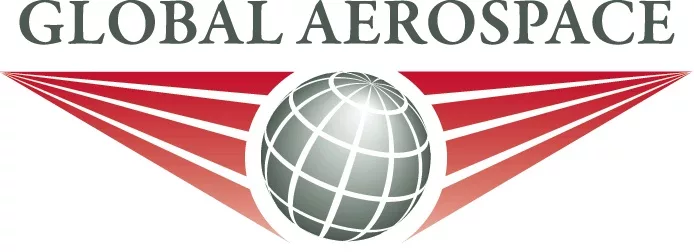
Global Aerospace Replaces Aging Dell EMC Data Domain with Highly Scalable ExaGrid System
Customer Overview
Global Aerospace is a leading provider of aerospace insurance with a worldwide portfolio of clients who are engaged in every aspect of the aviation and space industries. Their unique culture is built around innovation and they continually invest in technology that supports creative thinking and effective collaboration both internally and with their clients and their brokers. Headquartered in the UK, they have offices in Canada, France, Germany, Switzerland and throughout the United States. Across the world they employ over 300 people. Their experience dates back to the 1920s and our underwriting is backed by a pool of high quality insurance companies representing some of the most respected names in the business.
Key Benefits:
- Seamless integration with backup apps led to replacement of Data Domain
- Scalability is ‘one of ExaGrid’s best features’
- Backups are more reliable; backup windows are shorter and don’t impede production hours
Insurer Seeks Alternative to Aging Data Domain System
Global Aerospace found that its Dell EMC Data Domain system was running out of space as it reached its end of life. The company began to investigate replacements for the aging system and considered other Data Domain models, but also looked at alternate solutions that would support its backup applications, Veritas Backup Exec and Veeam.
“My manager had been to a storage exhibition and learned about ExaGrid there,” said Paul Draper, Global Aerospace’s technical analyst. “We realized that ExaGrid had better integration with the backup software that we were using. We liked the fact that the ExaGrid system was modular and easily expandable, so we decided to replace Data Domain with ExaGrid.” Global Aerospace installed ExaGrid systems at its primary site and also at a secondary site for replication of critical data. “After we moved the data from the Data Domain system to the ExaGrid system at our primary site, we created a full backup and then started replicating to our secondary site. Overall, installation and setup were simple,” said Paul.
The ExaGrid system is easy to install and use and works seamlessly with the industry’s leading backup applications so that an organization can retain its investment in its existing backup applications and processes. In addition, ExaGrid appliances can replicate to a second ExaGrid appliance at a second site or to the public cloud for DR (disaster recovery).
Landing Zone and Superior Deduplication Deliver More Reliable Backups
Paul backs up Global Aerospace’s data in daily incrementals and weekly fulls. The data is a mix of operating systems, files, and SQL databases. Non-critical data is stored on tape, which can cause a bit of a delay in the overall production schedule, but Paul has noticed that delays have been less frequent since switching to ExaGrid, and that the backup window is shorter in general.
“Switching to ExaGrid has resulted in more reliable backups. We haven’t run out of space like we had before. Backup windows are smaller – several hours shorter for our largest backup job – and they don’t run into production time as often.”
ExaGrid writes backups directly to a disk-cache Landing Zone, avoiding inline processing and ensuring the highest possible backup performance, which results in the shortest backup window. Adaptive Deduplication performs deduplication and replication in parallel with backups for a strong recovery point (RPO). As data is being deduplicated to the repository, it can also be replicated to a second ExaGrid site or the public cloud for disaster recovery (DR).

"Switching to ExaGrid has resulted in more reliable backups. We haven’t run out of space like we had before. Backup windows are smaller – several hours shorter for our largest backup job. "
Scale-Out Architecture Keeps Pace with Data Growth
Paul has been impressed by the amount of data that can be stored thanks to ExaGrid’s deduplication, but when data growth caused space to become a bit limited, he decided to scale out the system by adding another appliance. “ExaGrid’s deduplication and compression are better than our prior system, so we’re able to store much more data. We added an appliance, and that was quite easy to do. We installed it, and our support engineer held a Webex session with us to configure the system. Scalability is one of ExaGrid’s best features.”
ExaGrid’s award-winning scale-out architecture provides customers with a fixed-length backup window regardless of data growth. Its unique disk-cache Landing Zone allows for the fastest backups and retains the most recent backup in its full undeduplicated form, enabling the fastest restores. ExaGrid’s appliance models can be mixed and matched into a single scale-out system allowing a full backup of up to 2.7PB with a combined ingest rate of 488TB/hr, in a single system. The appliances automatically join the scale-out system. Each appliance includes the appropriate amount of processor, memory, disk, and bandwidth for the data size. By adding compute with capacity, the backup window remains fixed in length as the data grows. Automatic load balancing across all repositories allows for full utilization of all appliances. Data is deduplicated into an offline repository, and additionally, data is globally deduplicated across all repositories.
This combination of capabilities in a turnkey appliance makes the ExaGrid system easy to install, manage, and scale. ExaGrid’s architecture provides lifetime value and investment protection that no other architecture can match.
ExaGrid Supports Wide Variety of Backup Apps
Paul has found that ExaGrid is easier to manage than Data Domain, monitoring the systems at both the primary and secondary sites using ExaGrid’s GUI. He also finds the system is flexible and easily works with different backup applications. “I like the fact that we can tailor shares to the specific application we’re using for backup; in other words, we can set up a Veeam-specific share and it’s quite easy to add network cards as well, so we can have multiple streams of data going in.”
ExaGrid supports a wide variety of backup applications, utilities, and database dumps. In addition, ExaGrid allows multiple approaches within the same environment. An organization can use one backup application for its physical servers, a different backup application or utility for its virtual environment, and also perform direct Microsoft SQL or Oracle RMAN database dumps – all to the same ExaGrid system. This approach allows customers to use the backup application(s) and utilities of their choosing, use best-of-breed backup applications and utilities, and choose the right backup application and utility for each specific use case.
ExaGrid and Veeam
Veeam’s backup solutions and ExaGrid’s Tiered Backup Storage combine for the industry’s fastest backups, fastest restores, a scale-out storage system as data grows, and a strong ransomware recovery story – all at the lowest cost. Veeam uses changed block tracking to perform a level of data deduplication. ExaGrid allows Veeam deduplication and Veeam dedupe-friendly compression to stay on. ExaGrid will increase Veeam’s deduplication by a factor of about 7:1 to a total combined deduplication ratio of 14:1, reducing the storage required and saving on storage costs up front and over time
ExaGrid and Veritas Backup Exec
Veritas Backup Exec provides cost-effective, high-performance backup and recovery – including continuous data protection for Microsoft Exchange servers, Microsoft SQL servers, file servers, and workstations. High-performance agents and options provide fast, flexible, granular protection and scalable management of local and remote server backups. Organizations using Veritas Backup Exec can look to ExaGrid Tiered Backup Storage for nightly backups. ExaGrid sits behind existing backup applications, such as Veritas Backup Exec, providing faster and more reliable backups and restores. In a network running Veritas Backup Exec, using ExaGrid is as easy as pointing existing backup jobs at a NAS share on the ExaGrid system. Backup jobs are sent directly from the backup application to ExaGrid for backup to disk.